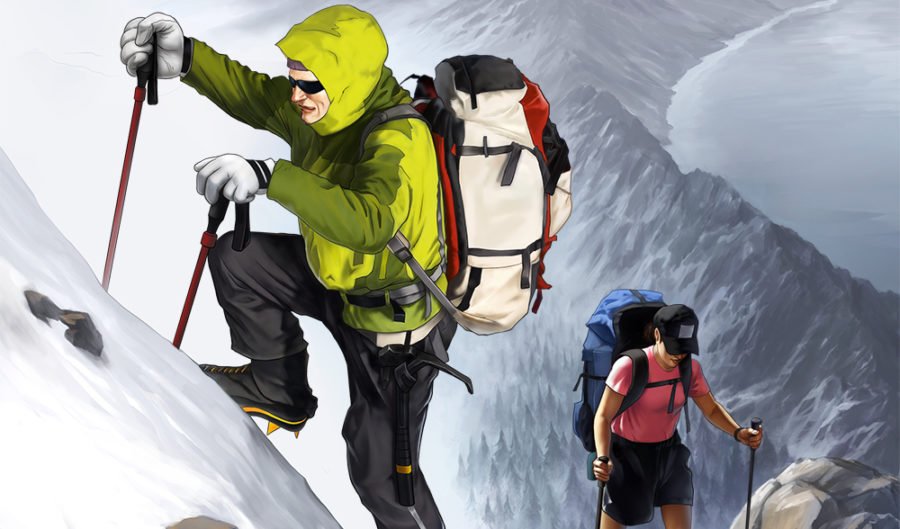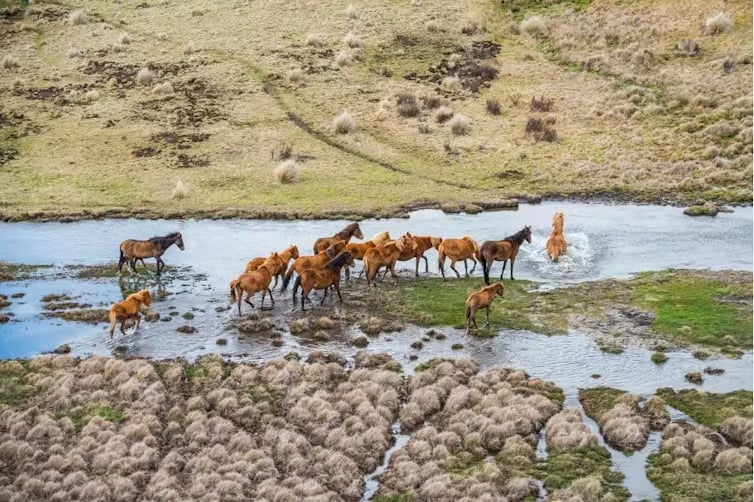Dangers of altitude sickness

AFTER PITCHING HIS tent on the north ridge of Mt Everest in May 2011, Andrew Lock began to feel unwell. It was late afternoon, the temperature was well below freezing and he’d climbed to an altitude of about 8350m. No stranger to the effects of high altitudes, he was planning to rest before pushing on to the 8848m summit.
It was his 25th expedition into the ‘death zone’ (altitudes of 8000m or higher). The air at Everest’s summit contains about one-third of the oxygen found at sea level, which is not enough to sustain human life for long. In 2009 Andrew became the first Australian to reach the summit of all 14 of the world’s mountains above 8000m, for which he became the Australian Geographic Society’s Adventurer of the Year. He’d climbed all – except Mt Everest – without supplementary oxygen. On this ascent of Everest, his third, he was attempting to do it without oxygen also.
Andrew was used to nausea at high altitudes, but soon after he set off for the summit his discomfort intensified and he began to vomit. Within hours, his vision deteriorated. He pushed on, climbing to about 8600m, but was having trouble perceiving distances and began to experience tunnel vision. By then he was unsteady on his feet and was also hallucinating, imagining giant bats flying towards him.
“I thought I might lose the ability to rationally monitor my situation and it was therefore appropriate to turn around and come down,” Andrew says.
He was experiencing one of three forms of altitude sickness, and one of the most severe: high-altitude cerebral oedema (HACE). Because of the lack of oxygen in the air, his body was working harder than normal to oxygenate his brain. This damaged the membranes lining it, which allowed fluid to leak in from the blood, causing his brain to swell.
Acute Mountain Sickness
HACE is one of three types of altitude illness. The mildest and most common form, acute mountain sickness (AMS), generally affects people at altitudes upwards of about 2500m and can feel similar to a hangover: headaches, nausea, a loss of appetite, dizziness and fatigue. High-altitude pulmonary oedema (HAPE) is characterised by fluid in the lungs. As with HACE, it can very quickly become deadly. “They are potentially fatal,” says Dr Edi Albert, an expert in wilderness, expedition and high-altitude medicine. “You can go from having mild cerebral or pulmonary oedema symptoms to being dead within 12 hours.”
A mountaineer himself, Edi suffered from both types of altitude sickness on separate occasions in the 1990s while climbing the Himalaya and Karakoram ranges of Asia. He is currently setting up a charity that will provide medical facilities to local people in Langtang, Nepal, where altitude sickness is prevalent.
“In its milder forms, altitude sickness is very, very common,” he says. According to Swiss researchers, about one-third of trekkers experience AMS by the time they reach 3650m of altitude, and more than half show symptoms at 4500m.
The severe forms of altitude sickness are rare, but “if you go trekking with a group of half-a-dozen people, a couple of them are going to get AMS,” Edi says.
Altitude sickness occurs when people ascend to higher elevations without giving their bodies time to acclimatise. “There are no short cuts,” says Garry Weare, founding director of the Australian Himalayan Foundation, who has led expeditions for the past 40 years.
“The safest way to deal with altitude is to ascend gradually.” Even with a gradual climb, however, symptoms can occur. “People have to listen to their own bodies and if they’re feeling in any way distressed, they should stop until they’ve had enough time to acclimatise,” he says.
To avoid becoming ill at altitudes higher than 2500m, you should ascend by just a few hundred metres each day. “You shouldn’t spend excessive nights more than 300–400m higher than the previous night, and every 1000m you should have a rest day to acclimatise,” Edi says.
In mild cases of AMS, the drug Diamox can help the body acclimatise, but in severe cases, descent is the only option, and just a few hundred metres can bring about a remarkable change. “If your situation doesn’t improve…then you’ve got to make a decision about turning around and going back down,” Edi says.
Altitude sickness can affect anybody, regardless of age, fitness or experience. “It can be very dangerous but it can also be well managed,” says Andrew, who made a full recovery after descending to Everest Base Camp, at 5100m. “I was able to recognise the symptoms…and it didn’t mean I needed to turn around immediately, it meant I needed to monitor my situation closely.”
Can you get altitude sickness in Australia?
Severe altitude sickness doesn’t typically occur in Australia. Our highest mountain, Mt Kosciuszko, rises to 2228m, where the air contains about three-quarters as much oxygen as there is at sea level.
“There are occasional cases where you’ll find people getting sick as low as 2000m,” says Edi, who works as a doctor at the Perisher Ski Resort, in the Snowy Mountains, NSW, during the ski season. “We’re at an altitude of about 1800m, which is really too low to get conventional high-altitude illness, but we’ll see several people each winter who already have a medical condition, such as angina or asthma, and even at that low altitude they begin to be affected by the lack of oxygen.”
The full story can be found in Australian Geographic #115




